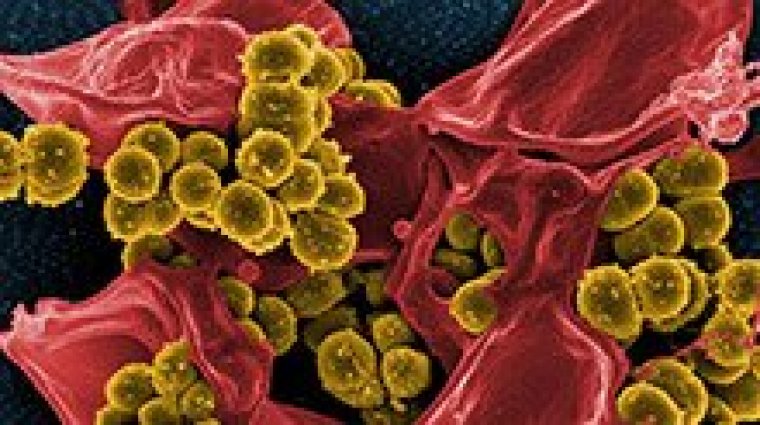| Health / Health News |
Antibiotic Combinations May Combat MRSA Infections
NIH | OCTOBER 22, 2015
Many bacterial infections have become difficult to treat because the microbes responsible have adapted to become resistant to the most effective antibiotics. Methicillin-resistant Staphylococcus aureus, or MRSA, has evolved from a controllable nuisance into a serious public health concern. MRSA is now one of the most common hospital-acquired infections.

Digitally colorized scanning electron micrograph of methicillin-resistant Staphylococcus aureus (mustard-colored spheres) and a dead human white blood cell (red). ![]()
In the 1940s, S. aureus infections were treated with compounds called β-lactams (penicillins). These drugs interfere with the synthesis of cell walls to prevent bacteria from growing and reproducing. Bacteria capable of making enzymes that break down β-lactams soon emerged.
Second-generation penicillins, such as methicillin, were resistant to those enzymes. However, methicillin-resistant strains were reported soon after the drug’s introduction.
These strains had acquired genes from other bacteria that enabled them to produce cell walls even in the presence of β-lactams. Researchers have continued to develop new types of antibiotics to combat MRSA infections, but resistance to many of these have already been reported.
Combinations of antibiotics have had promising results against some microbes. The scientists carefully selected clinically approved drugs that work synergistically. They chose from 3 distinct subclasses of β-lactam compounds that target different aspects of the cell wall synthesis machinery in MRSA: meropenem, piperacillin, and tazobactam (ME/PI/TZ).
The ME/PI/TZ trio was more effective against the strain than any of the drugs alone or in pairs. The triple combination also proved effective in the lab against a panel of strains taken from 72 other clinical cases of MRSA.
YOU MAY ALSO LIKE


